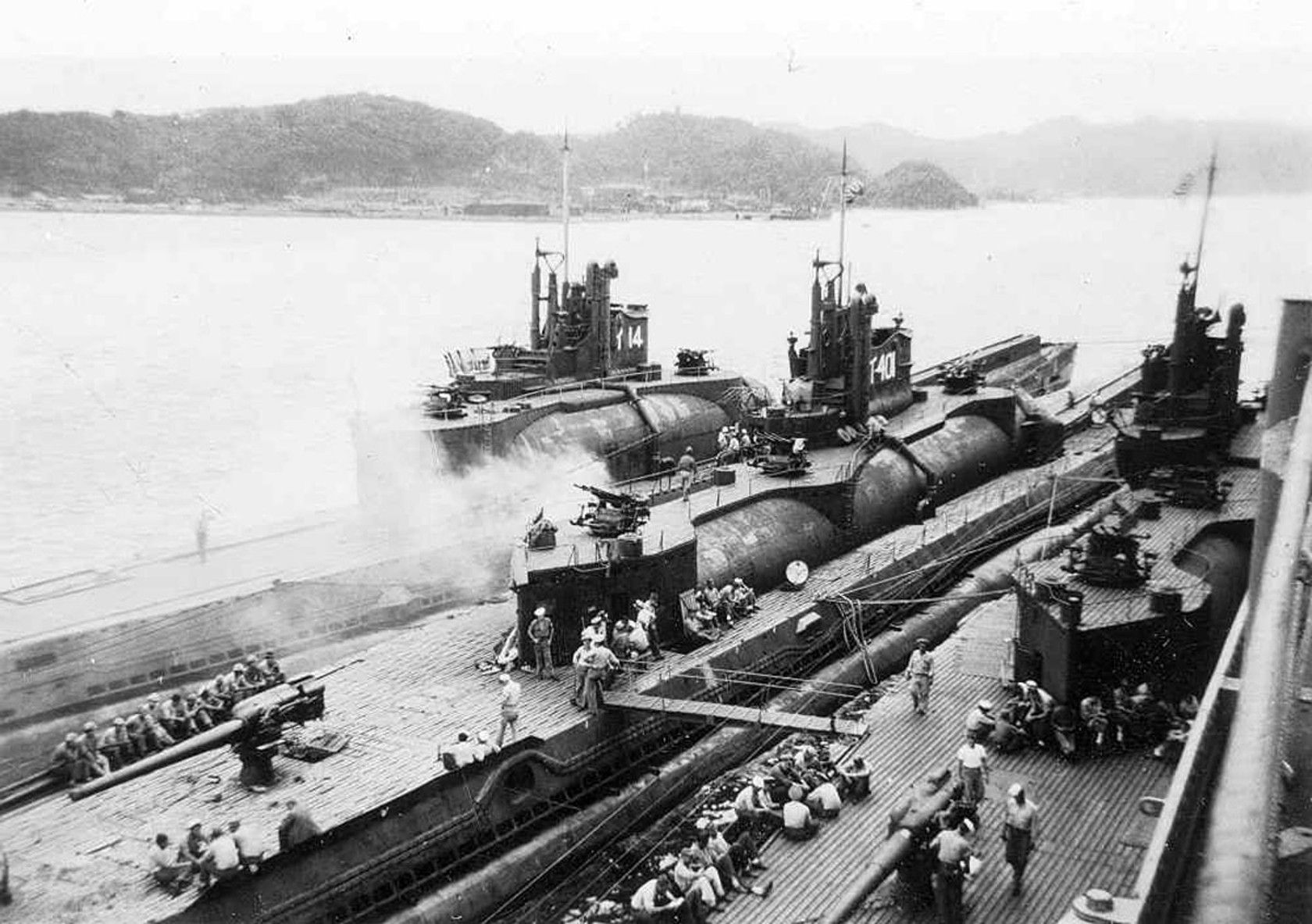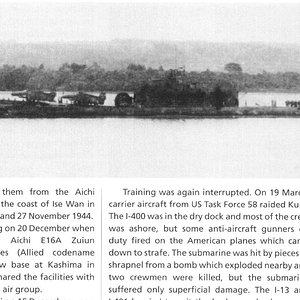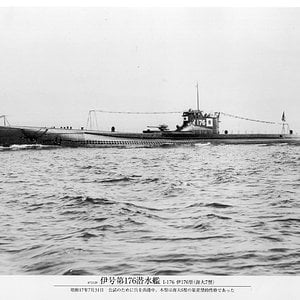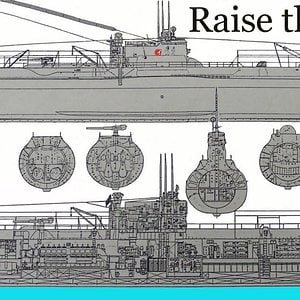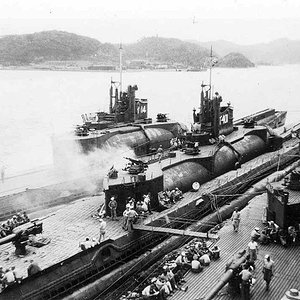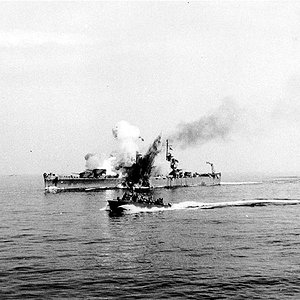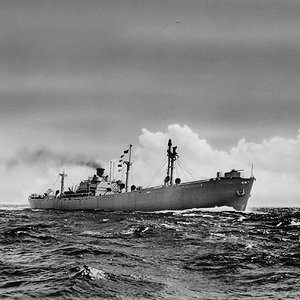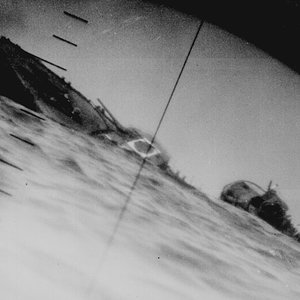Navigation
Install the app
How to install the app on iOS
Follow along with the video below to see how to install our site as a web app on your home screen.
Note: This feature may not be available in some browsers.
More options
You are using an out of date browser. It may not display this or other websites correctly.
You should upgrade or use an alternative browser.
You should upgrade or use an alternative browser.
Characteristics
Deck plan and section profile of the type I-400 submarineEach submarine had four 1,680 kW (2,250 hp) engines and carried enough fuel to go around the world one-and-a-half times—more than enough to reach the United States travelling east or west. Measuring more than 120 m (390 ft) long overall, they displaced 5,900 t (6,500 short tons), more than double their typical American contemporaries. The cross-section of its pressure hull had a unique figure-of-eight shape which afforded the necessary strength and stability to handle the weight of a large on-deck aircraft hangar. To allow stowage of three aircraft along the vessel's centreline, the conning tower was offset to port. [4]
Located approximately amidships on the top deck was a cylindrical watertight aircraft hangar, 31 m (102 ft) long and 3.5 m (11 ft) in diameter. The outer access door could be opened hydraulically from within or manually from the outside by turning a large hand-wheel connected to a rack and spur gear. The door was made waterproof with a 51-millimetre-thick (2.0 in) rubber gasket. [4] [5]
Sited atop the hangar were three water-proofed Type 96 triple-mount 25 mm (1.0 in) machine guns for AA defence, two abaft and one forward the conning tower. A single 25 mm (1.0 in) gun on a pedestal mount was also located just abaft the bridge. One Type 11, 140 mm (5.5 in) deck gun was positioned aft of the hangar. It had a range of 15,000 m (49,000 ft). [6]
Eight torpedo tubes were mounted in the bow, four above and four below. There were no aft tubes. [4] [7]
Stowed in an open recessed compartment on the forward port side, just below top deck, was a collapsible crane used to retrieve the submarine's Seiran floatplanes. The crane had an electrically operated hoist and was capable of lifting approximately 4.5 t (5.0 short tons). It was raised mechanically to a height of 8 m (26 ft) via a motor inside the boat. The boom extended out to a length of 11.8 m (39 ft). [8]
A special trim system was fitted to the boats, allowing them to loiter submerged and stationary while awaiting the return of their aircraft. However, operation of this system was noisy and its usefulness was in doubt. [4] [9]
Strung along the submarine's gunwales were two parallel sets of demagnetization cables, running from the stern to the bow planes. These were intended to dissipate the static charge that normally builds up when a boat's hull slices through the water, causing the steel in the hull to deteriorate over time. [10]
Electronics on board the I-400s included a Mark 3 Model 1 air search radar equipped with two separate antennas. This unit was capable of detecting aircraft out to a range of 80 km (43 nmi), though Japanese operators later admitted that planes flying below the radar horizon could escape detection altogether. The boats were also equipped with Mark 2 Model 2 air/surface radar sets with distinctive horn-shaped antennas. Each boat carried an E27 radar warning receiver, connected to both a trainable dipole antenna and a fixed non-directional antenna made up of a wire mesh basket and two metal rods. [11]
The submarines were equipped with two periscopes of German manufacture, about 12.2 m (40 ft) long, one for use during daylight and the other at night. [12]
A special anechoic coating made from a mixture of gum, asbestos, and adhesives, based on German technology, was applied to the hulls from the waterline to the bilge keel. This was intended to absorb or diffuse enemy sonar pulses and dampen reverberations from the boat's internal machinery, making detection while submerged more difficult. [13][14]
In May 1945, I-401 was fitted with a German-supplied snorkel, a hydraulically-raised air intake device allowing the boat to run its diesel engines and recharge its batteries while remaining at periscope depth. This retrofit occurred while the boat was laid up at Kure for repairs after being damaged by an American mine in April. [15]
I-402 was completed immediately before the war ended, but had been converted during building to a tanker and was never equipped with aircraft. [16]
Deck plan and section profile of the type I-400 submarineEach submarine had four 1,680 kW (2,250 hp) engines and carried enough fuel to go around the world one-and-a-half times—more than enough to reach the United States travelling east or west. Measuring more than 120 m (390 ft) long overall, they displaced 5,900 t (6,500 short tons), more than double their typical American contemporaries. The cross-section of its pressure hull had a unique figure-of-eight shape which afforded the necessary strength and stability to handle the weight of a large on-deck aircraft hangar. To allow stowage of three aircraft along the vessel's centreline, the conning tower was offset to port. [4]
Located approximately amidships on the top deck was a cylindrical watertight aircraft hangar, 31 m (102 ft) long and 3.5 m (11 ft) in diameter. The outer access door could be opened hydraulically from within or manually from the outside by turning a large hand-wheel connected to a rack and spur gear. The door was made waterproof with a 51-millimetre-thick (2.0 in) rubber gasket. [4] [5]
Sited atop the hangar were three water-proofed Type 96 triple-mount 25 mm (1.0 in) machine guns for AA defence, two abaft and one forward the conning tower. A single 25 mm (1.0 in) gun on a pedestal mount was also located just abaft the bridge. One Type 11, 140 mm (5.5 in) deck gun was positioned aft of the hangar. It had a range of 15,000 m (49,000 ft). [6]
Eight torpedo tubes were mounted in the bow, four above and four below. There were no aft tubes. [4] [7]
Stowed in an open recessed compartment on the forward port side, just below top deck, was a collapsible crane used to retrieve the submarine's Seiran floatplanes. The crane had an electrically operated hoist and was capable of lifting approximately 4.5 t (5.0 short tons). It was raised mechanically to a height of 8 m (26 ft) via a motor inside the boat. The boom extended out to a length of 11.8 m (39 ft). [8]
A special trim system was fitted to the boats, allowing them to loiter submerged and stationary while awaiting the return of their aircraft. However, operation of this system was noisy and its usefulness was in doubt. [4] [9]
Strung along the submarine's gunwales were two parallel sets of demagnetization cables, running from the stern to the bow planes. These were intended to dissipate the static charge that normally builds up when a boat's hull slices through the water, causing the steel in the hull to deteriorate over time. [10]
Electronics on board the I-400s included a Mark 3 Model 1 air search radar equipped with two separate antennas. This unit was capable of detecting aircraft out to a range of 80 km (43 nmi), though Japanese operators later admitted that planes flying below the radar horizon could escape detection altogether. The boats were also equipped with Mark 2 Model 2 air/surface radar sets with distinctive horn-shaped antennas. Each boat carried an E27 radar warning receiver, connected to both a trainable dipole antenna and a fixed non-directional antenna made up of a wire mesh basket and two metal rods. [11]
The submarines were equipped with two periscopes of German manufacture, about 12.2 m (40 ft) long, one for use during daylight and the other at night. [12]
A special anechoic coating made from a mixture of gum, asbestos, and adhesives, based on German technology, was applied to the hulls from the waterline to the bilge keel. This was intended to absorb or diffuse enemy sonar pulses and dampen reverberations from the boat's internal machinery, making detection while submerged more difficult. [13][14]
In May 1945, I-401 was fitted with a German-supplied snorkel, a hydraulically-raised air intake device allowing the boat to run its diesel engines and recharge its batteries while remaining at periscope depth. This retrofit occurred while the boat was laid up at Kure for repairs after being damaged by an American mine in April. [15]
I-402 was completed immediately before the war ended, but had been converted during building to a tanker and was never equipped with aircraft. [16]

